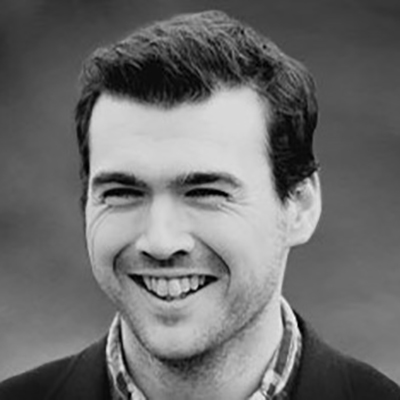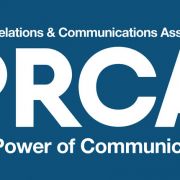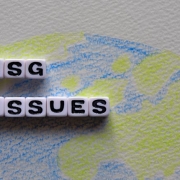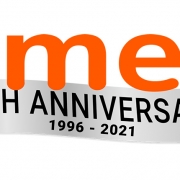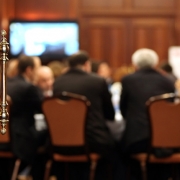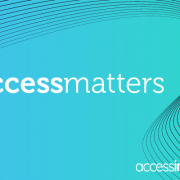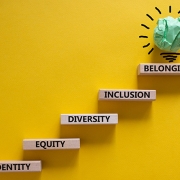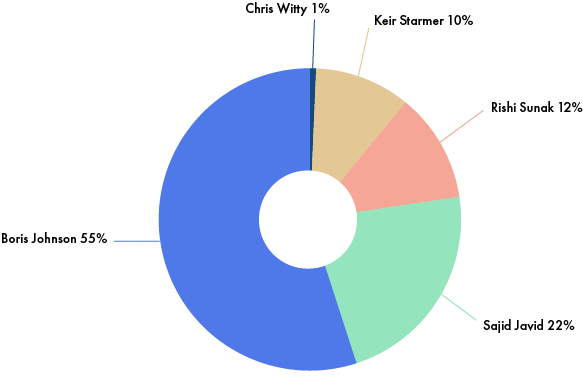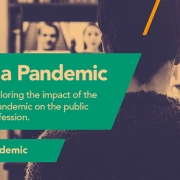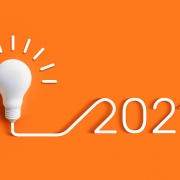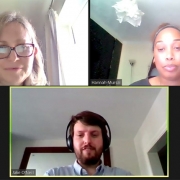How to strengthen connections to your brand with neuro PR
Using neuro connections to form unconscious and potentially unbreakable bonds between brands and consumers – sounds kind of sci-fi, perhaps. But don’t be worried – it’s perfectly natural.
Why are we drawn to particular cans of baked beans when we’re shopping, even if we don’t care what they taste like? Why is it so automatic to blurt out a certain chocolate bar’s tagline when someone mentions ‘taking a break’? This is the power of the subconscious and it’s something Harvey & Hugo PR’s managing director and Leader of the Pack Charlotte Nichols believes all PRs need to be aware of as part of their work.
Leading our latest webinar Neuro PR: Strengthening the Brain and Brand Connection, Charlotte showed that good PR takes the way our minds work into account and works with it. If your mind is now conjuring up those old stories of cinemas splicing pictures of popcorn into the adverts before films to boost concession sales, certain scenes of similar splices in Fight Club or the messages hidden in billboards in They Live, be assured that neuro PR isn’t anywhere near as nefarious – it’s just very clever.
Here are some of the useful ways Charlotte shared for creating memorable campaigns and locking in loyalty with brain science…
Get eyes, and brains, on you
‘We don’t see with our eyes, we see with our brain. We think we’re in control of our focus – we’re not,’ said Charlotte.
‘For example, think of ‘the cocktail party effect’. You’re deep in conversation with someone. All of a sudden, you hear your name from somewhere else in the room. Your subconscious scans the room all the time, no matter where you are, and picks up little alerts.
‘When you say “I’ve got a feeling about it”, it’s actually your subconscious. Often, we make decisions with our ‘gut feeling’, then use our rational thoughts to justify our decisions.
‘In the marketing sector, people say that “adverts don’t work”. Sometimes you can’t remember the adverts, sure, but it doesn’t mean it hasn’t gone into your brain. It’s always there, in your “gut feeling”.’
Attract the right kind of attention
Full attention from an audience can have its drawbacks. According to research, there are negatives that come with ‘high involvement attention’ – watching a perfume advert – versus ‘low involvement attention’ – checking your phone while the ad plays on a TV on the other side of the room.
Perhaps while watching a perfume advert, you realise you don’t like the model or actor chosen to represent the product. This can cause ‘inattentional blindness’ – ‘where you’re so distracted by one thing, you miss the message,’ says Charlotte. Letting messages seep through into the subconscious may be more effective. Certainly better than a potential customer watching an expensively-produced commercial with an internationally-famous actor and only thinking ‘Ugh, I really hate that guy’.
Enhance powerful emotions
‘Emotions exist to move us as humans,’ says Charlotte. ‘We feel first and then the brain interprets it.’
‘Feeling is an unconscious experience – you cannot control the way you feel. We frame things with our rational conscious thought, sometimes even doing that can’t take away the feeling of it.
‘There are also sematic markers when we feel emotions. Sweaty palms – that happens before our brain registers that emotion. We start running from a bear before our brain processes what’s going on. We feel first, and then our brain interprets it. That’s why all these small touch points add up to a massive experience of emotions.’
Brands that are making good use of their customers’ emotions right now that we can learn from? Charlotte pointed to McDonald’s current focus on friendship groups meeting up again after the isolation of lockdown: ‘They’re doing really well with their recent ads, it appeals to your emotion – wanting to meet up with your friends… and maybe you just really want chips, too.’
Show your brand’s personality, story and purpose
While brands like Tesla push brand personality first and foremost in campaigns focusing on sustainability, there are some standard personality traits that are tried and true, whatever your brand, product or service.
‘Listen and engage,’ says Charlotte.
‘You don’t always have to be doing anything. It can do your brand so well to just listen to your customers – social media is great for this. It helps build that emotional connection.’
Make good memories and good first impressions
‘The language we use is so important. We’re told imagery is more important, but never underestimate the words we use.’
‘As PRs, we are the artists of semantic memory networks. You can change these networks, it just takes a long time to do.’
The saying goes that first impressions are particularly important and, as Charlotte showed, there is evidence to back this up. Brains don’t always want to work so hard – ‘the brain uses 25% energy at rest,’ shared Charlotte. ‘You won’t remember something that’s really hard to understand, so don’t underestimate the power of a catchy tagline’.
Use your brain
After all this talk about other people’s brains, don’t forget to make the most of your own. Take time to think and really ruminate about the projects you’re working on.
‘Our subconscious is so powerful. As PRs and marketers, we can be guilty of measuring results the same way, over and over again. Meditation will boost creativity and it’s just good for our health.
‘I believe in the future we’ll be doing more of this to get to know ourselves, and our brands, much more.’
Want help listening to your audience to make connections? Try out Pulsar’s social listening solutions and the Vuelio media database.




